A Guide for Homeowners: Preventing Mold Following Water Damage
Experiencing water damage in your home can be a distressing event, leaving you to contend not just with the immediate cleanup but also with the lurking threat of mold growth. Mold, a silent intruder that thrives in moist environments, can quickly turn a minor nuisance into a major health hazard and cause significant damage to your property. Its ability to proliferate rapidly under the right conditions makes it a force to be reckoned with in the aftermath of water damage.
Understanding the risks and knowing how to act swiftly can make all the difference in preventing mold from taking hold. This guide is designed to arm homeowners with the essential knowledge and practical steps necessary to fend off mold after experiencing water damage. From immediate actions to long-term prevention strategies, we’ll cover everything you need to ensure your home remains safe, healthy, and mold-free. Whether you’re currently facing water damage or just want to be prepared, this homeowner’s guide will equip you with the tools to effectively prevent mold growth and protect your home and health.
Understanding Mold and Its Causes
Mold is not just an unsightly issue—it can pose serious health risks and cause extensive damage to your home if left unchecked. But what exactly is mold, and why does it become such a significant problem after water damage?
Mold is a type of fungus that can grow both indoors and outdoors, thriving in warm, damp, and humid conditions. It reproduces by releasing tiny spores into the air, which can then land on wet surfaces and begin to grow. In the natural environment, mold plays a critical role in breaking down organic matter. However, when it finds its way into our homes following water damage, it can lead to health issues such as allergies, respiratory problems, and, in severe cases, more serious illnesses.
The Perfect Conditions for Mold Growth: Mold growth in homes is primarily fueled by moisture. Whether it’s a leaky roof, flooding, or high humidity levels, any source of water can create an environment conducive to mold. This is why water damage, if not addressed promptly and properly, often leads to mold infestations.
Understanding the causes and conditions that favor mold growth is crucial for homeowners. Recognizing these risk factors enables you to take proactive steps to minimize moisture and, consequently, the chance of mold taking root in your home. Whether it’s a sudden flood or a slow, unnoticed leak, any accumulation of water or moisture can become a potential breeding ground for mold. Thus, the key to mold prevention lies in effective water management and quick response to water damage incidents.
By grasitating these fundamentals, you’re better equipped to take the necessary steps to protect your home from mold after an incident of water damage. The next sections will guide you through immediate actions and preventive measures to ensure a mold-free environment in your home.
Immediate Steps After Water Damage
The hours immediately following water damage are critical in preventing mold growth. Acting swiftly can significantly reduce the likelihood of mold taking root. Here are key steps to take as soon as you notice water damage in your home:
- Stop the Water Source: The first step is to identify and stop the source of water. This may involve turning off the main water supply, repairing a broken pipe, or addressing a leaky roof. Stopping the water at its source is crucial to preventing further damage.
- Remove Standing Water: Use a wet-dry vacuum, mops, and towels to remove standing water from the affected areas. The faster you can dry out the space, the less chance mold has to grow.
- Move and Dry Water-Damaged Items: Furniture, carpets, and personal items that have been soaked should be moved to a well-ventilated area to dry. Sometimes, professional cleaning may be necessary to fully restore these items, but quick removal from the wet area is critical.
- Ventilate the Affected Area: Open windows and doors to allow fresh air to circulate. Use fans to promote air movement and dehumidifiers to reduce indoor humidity levels. Proper ventilation is key in drying out the space and limiting mold growth.
- Assess Carpet and Padding: Carpets and underpadding that have been saturated with water might need to be discarded if they cannot be dried and cleaned properly. Mold can easily grow beneath wet carpeting, creating hidden problems.
- Discard Unsalvageable Materials: Some materials, like insulation or drywall that have been waterlogged, may need to be removed and replaced. These materials can harbor mold growth and affect indoor air quality.
- Photograph and Document Damage: For insurance purposes, document the extent of the water damage with photos and detailed notes. This documentation will be essential when filing an insurance claim.
Taking these immediate actions can help minimize the moisture that mold needs to grow. However, even with diligent effort, some areas of your home may still be at risk for mold. In many cases, professional water damage restoration services are necessary to ensure your home is thoroughly dried and restored, preventing long-term issues.
Professional Assessment and Restoration
After addressing the immediate aftermath of water damage, the next critical step is to consider professional assessment and restoration. Even if you’ve done a thorough job with initial cleanup and drying, some areas may require a professional’s touch to fully recover and prevent mold growth.
Why Professional Services Matter: Specialists in water damage restoration have the tools, knowledge, and experience to assess the full extent of the damage—including identifying hidden moisture that could lead to mold. They use industrial-grade equipment, such as powerful dehumidifiers and air movers, to ensure your home is completely dried out. Moreover, professionals can safely handle contaminated water damage and materials, reducing health risks associated with potential pathogens.
Choosing the Right Service: Look for reputable, certified professionals who specialize in water damage restoration and mold remediation. They should conduct a thorough inspection, provide a detailed plan of action, and offer an estimate before starting the work. Ensure they follow industry standards and have positive reviews from past clients.
Preventive Measures for Mold Growth
With your home dried and beginning to recover from water damage, implementing preventive measures against mold growth is essential. Here are strategies to keep your home mold-free:
- Maintain Low Humidity Levels: Use dehumidifiers and air conditioners to keep indoor humidity below 50%. Regularly check these devices to ensure they’re functioning properly.
- Ventilate Your Home: Ensure that areas prone to moisture, like bathrooms and kitchens, are well-ventilated. Use exhaust fans to expel moisture-laden air outside.
- Fix Leaks Promptly: Regularly inspect your home for leaks and fix them promptly. Pay attention to roofs, pipes, and windows.
- Dry Wet Areas Immediately: Any spills or leaks should be dried within 24-48 hours to prevent mold growth.
- Use Mold-Resistant Products: When repairing or renovating, consider using mold-resistant drywall, paint, and other materials, especially in areas prone to moisture.
Health Considerations and Mold Exposure
Grasping the full spectrum of health implications related to mold exposure is crucial, particularly for individuals with pre-existing conditions such as allergies, asthma, or compromised immune systems. Mold, a ubiquitous presence in both indoor and outdoor environments, can produce allergens, irritants, and in some cases, toxic substances known as mycotoxins. These can trigger a range of symptoms and health issues, underscoring the importance of addressing mold growth promptly and effectively.
Symptoms of Mold Exposure: The reaction to mold exposure can vary significantly among individuals, depending on the type of mold, the duration of exposure, and the person’s overall health and sensitivity. Common symptoms include sneezing, coughing, throat irritation, nasal congestion, watery eyes, skin irritation, and in more severe cases, wheezing or difficulty breathing. People with mold allergies may experience heightened reactions, while those with asthma may find their condition exacerbated by mold exposure.
High-Risk Groups: Certain individuals are more susceptible to the adverse effects of mold. This includes infants and children, the elderly, individuals with respiratory conditions such as asthma or chronic obstructive pulmonary disease (COPD), those with compromised immune systems, and people with mold allergies. For these groups, mold exposure can not only trigger symptoms but also lead to more serious health outcomes.
Minimizing Exposure During Cleanup: If you’re tackling mold cleanup or returning to a home where mold has been a problem, taking comprehensive precautions is essential to protect your health:
- Wear Protective Gear: Use N-95 respirators, gloves, and goggles to shield yourself from mold spores and cleaning agents. Covering your skin with long sleeves and pants can also prevent irritation.
- Ensure Adequate Ventilation: Open windows and doors and use fans to circulate air and disperse mold spores outside. If using air conditioning, ensure the system is not contaminated with mold.
- Consider Professional Help: For extensive mold issues, particularly in sensitive populations’ homes, hiring professional mold remediation services is advisable. These experts have the equipment and techniques to safely and effectively remove mold.
- Stay Elsewhere if Necessary: Individuals who are highly sensitive or at increased risk for mold-related health issues should consider staying away from the affected area until the cleanup process is thoroughly completed and the environment is deemed safe.
- Seek Medical Advice: If you experience health issues believed to be related to mold exposure, consult a healthcare provider for an evaluation and treatment plan. It’s important to mention your concerns about mold, as this information can assist in your diagnosis and care.
By understanding the potential health risks associated with mold exposure and taking steps to minimize those risks, especially during cleanup or remediation efforts, you can help safeguard your health and the well-being of your family.
Conclusion
Navigating the aftermath of water damage can be daunting, especially with the risk of mold growth. By taking immediate action, seeking professional help, and implementing preventive measures, you can protect your home and health from the long-term effects of mold.
If you’ve experienced water damage, don’t wait until it’s too late to address the potential for mold. Contact 1st Choice Structural Drying today for a comprehensive assessment and expert restoration services. Together, we can restore your home to its pre-damage condition, ensuring it remains a safe, mold-free environment for you and your loved ones.

